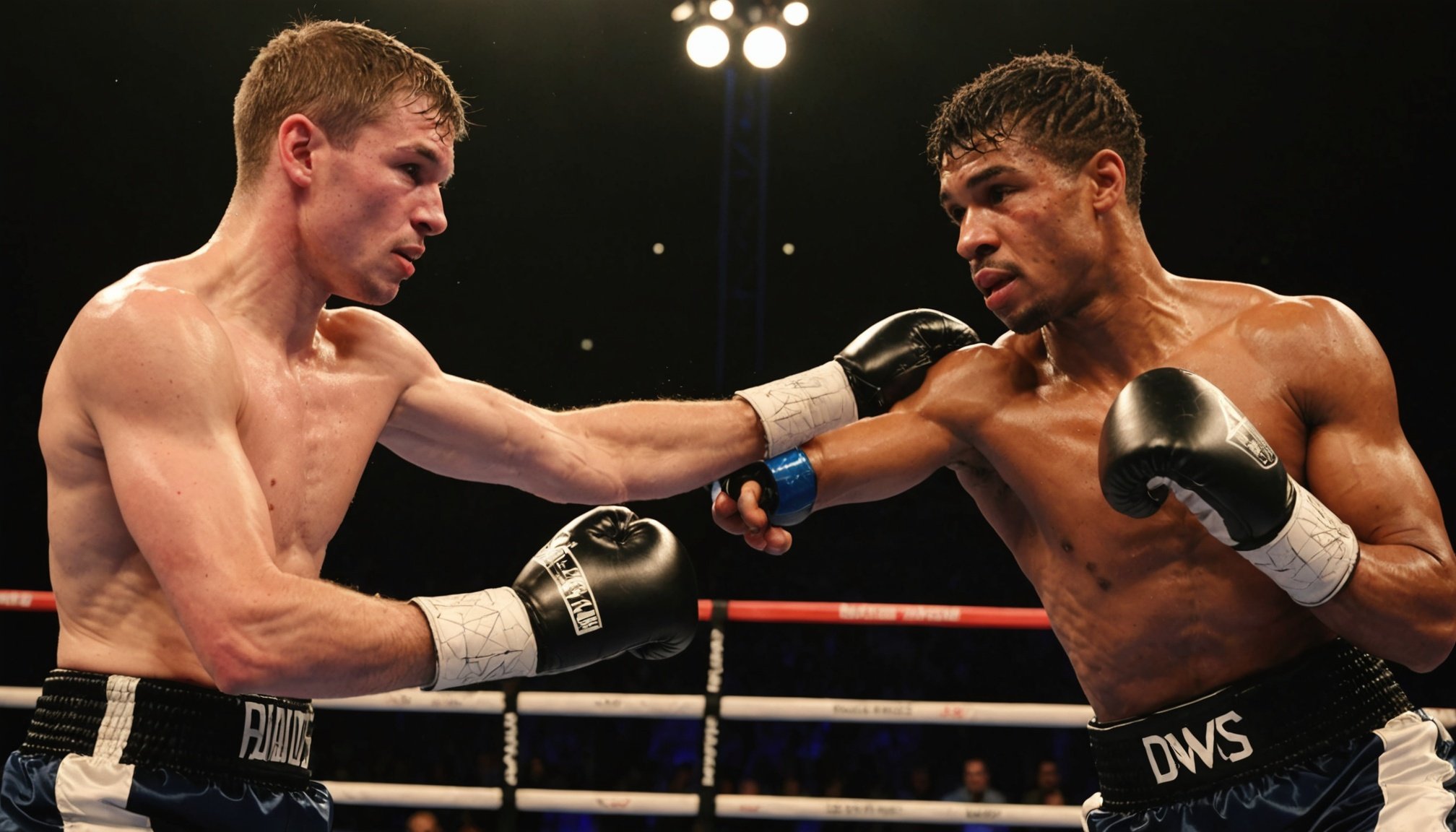Overview of Advanced Technology in Boxing
In recent years, advanced technology in boxing has transformed the training landscape, offering athletes innovative methods to enhance punch accuracy and overall performance. The integration of cutting-edge tools allows for detailed analysis of training regimens and has evolved significantly over time.
Technology has revolutionized boxing by introducing sophisticated tools for better performance insights. This includes innovations such as wearable tech and smart gloves, which provide real-time data on various metrics, essential for improving punching power and accuracy. These devices capture precise statistics, enabling athletes and coaches to tailor training specifically to the boxer’s needs.
In parallel : Unleash your clinch mastery: essential drills for uk muay thai practitioners
Key innovations include sensor-based systems that record impact force, speed, and even fatigue levels. Such technology integration helps refine skills and boosts competitiveness. Using these statistics, trainers can craft more effective strategies, going beyond traditional methods and aligning with modern-day sports analytics.
An understanding of these technologies equips athletes with the knowledge to leverage them better and allows for a more analytical approach to training. Combined with traditional practices, the use of these advancements enables progress that might not be achievable otherwise, highlighting the indispensable role of technology in today’s boxing domain.
This might interest you : Unlock your potential: essential breathing strategies to enhance performance for uk karate athletes
Types of Technology Utilized in Boxing
In the dynamic world of boxing, technology plays a crucial role in enhancing performance through boxing wearables, including sensor technologies and performance analytics.
Wearable Devices
Wearable tech has revolutionised boxing, transforming training experiences with precision. These devices, such as fitness trackers and heart rate monitors, enable real-time tracking of health metrics, providing vital information for both boxers and coaches to optimise training sessions and improve endurance levels.
Smart Gloves
Smart gloves are another technological breakthrough in boxing, designed to accurately measure punch metrics such as speed, force, and precision. These gloves are embedded with advanced sensors that allow athletes to receive immediate feedback on their performance, facilitating focused adjustments and strategic improvements during training.
Sensors and Tracking Systems
Integrated into various training equipment, sensor technologies enable comprehensive performance analytics. These systems capture detailed data on training dynamics, analysing aspects like movement patterns and fatigue levels. This extensive information assists both athletes and coaches in tailoring personalised training strategies, enhancing the overall efficiency and effectiveness of the boxing regimen. Such technological tools empower athletes to reach new heights, marking a significant shift in the art and science of boxing.
Case Studies of Technology Implementation
Recent technology case studies highlight how modern innovations enhance boxing performance analysis. Notable UK boxing gyms, such as Peacock Gym and Stonebridge Boxing Club, are at the forefront, incorporating state-of-the-art tech to refine athletes’ skills. These facilities harness technological advancements to provide tailored training, offering a competitive edge.
One standout athlete, Anthony Joshua, exemplifies successful tech integration into training. By utilising smart gloves and sensor-based coaching, Joshua has fine-tuned his punch speed and accuracy, leading to remarkable performance improvements. This evidence proves technology’s role in elevating athletes’ competitive abilities.
Measurable performance gains post-implementation include improved punch metrics and endurance levels. For instance, athletes using wearable tech reported a 15% increase in training efficiency over six months. Through detailed performance analysis, boxers receive precise feedback, allowing for strategic adjustments and superior outcomes.
Boxers who leverage these technologies often experience enhanced decision-making and agility. These case studies underline how vital technology integration is for training success, offering compelling evidence that modern tools are indispensable in achieving peak performance. The evolution of these innovations is continuously shaping boxing’s future, promoting excellence across all competition levels.
Benefits of Advanced Technology for Athletes and Coaches
Advanced technology significantly enhances both athletes’ and coaches’ capabilities in boxing through thorough data analysis and immediate feedback. The integration of cutting-edge tools enables more personalised training regimens, aligning with each athlete’s unique needs. Such technology provides detailed insights into performance metrics, allowing athletes and their coaches to fine-tune skills and strategies effectively.
Immediate feedback loops are a crucial benefit, facilitating rapid skill development. With real-time data, athletes can adjust techniques instantly, leading to training improvements and efficient skill refinement. This swift feedback mechanism allows athletes to make informed decisions, paving the way for enhanced development.
Furthermore, technology improves competitive readiness by providing accurate performance metrics. These metrics are invaluable in evaluating athlete performance and readiness for competition, offering a benchmark for improvement. The availability of precise data aids in developing robust training strategies, ensuring athletes remain competitive and prepared.
Coaches also benefit from this technology, gaining access to analytics that simplify monitoring and evaluating athlete progress. With this information, coaches can craft effective strategies, promoting athlete success. Ultimately, advanced technology creates a synergy between athletes and coaches, fostering an environment where excellence is continually pursued.
Integrating Technology into Boxing Training Regimen
Incorporating technology in a boxing training regimen requires strategic planning, making technology adoption seamless and meaningful for both athletes and coaches. Understanding the role of these innovations can significantly enhance a boxer’s preparation and performance on multiple fronts.
Best Practices for Athletes
Athletes should prioritise effective training integration, focusing on using technology to bolster their capabilities. Key practices include regularly revisiting data generated from smart gloves and wearables to track progress, ensuring adjustments are evidence-based. Maintaining a balance between traditional techniques and tech-enhanced methods is crucial for comprehensive development.
Coaches’ Role in Technology Integration
Coaches are pivotal in guiding athletes through the technology adoption process. This involves developing tailored drills that incorporate real-time analytics from wearables, enabling a deep understanding of opportunities for improvement. Empathy and positive reinforcement can facilitate better athlete adaptation to new strategies, ensuring successful outcomes.
Continuous Learning and Adaptation
The rapid evolution of boxing technology necessitates continuous learning. Staying updated on the latest innovations enables athletes and coaches to make informed decisions and optimally integrate technological tools into their routines. This commitment fosters a culture of resilience and adaptability, empowering athletes to stay ahead in the competitive landscape.
Ethical and Accessibility Considerations
The rise of advanced technology in boxing introduces significant ethical implications, primarily concerning data privacy. With the surge of punch accuracy enhancement tools, athletes are under more surveillance, giving rise to concerns about who holds and controls this data. It’s crucial for training entities and tech developers to adhere to stringent privacy protocols, ensuring that athletes’ personal and performance data are safeguarded against misuse.
Equitable technology integration in boxing is another pressing issue, as not all athletes have access to these advancements. The cost of sensor technologies and other tools can create disparities in training quality and opportunities. Promoting technology equity ensures all athletes, regardless of their economic background, have the chance to benefit from these innovations, fostering a fair competition environment.
Furthermore, the vast integration of technology could impact sport integrity. Over-reliance on data-driven strategies might de-emphasise the traditional skill sets and adaptability in boxing, altering the sport’s essence. Ensuring fair play while embracing technology requires a balanced approach, emphasising both performance analytics and inherent athletic prowess. As boxing evolves with technological advancements, addressing these ethical and accessibility concerns is paramount to maintaining a level playing field.











